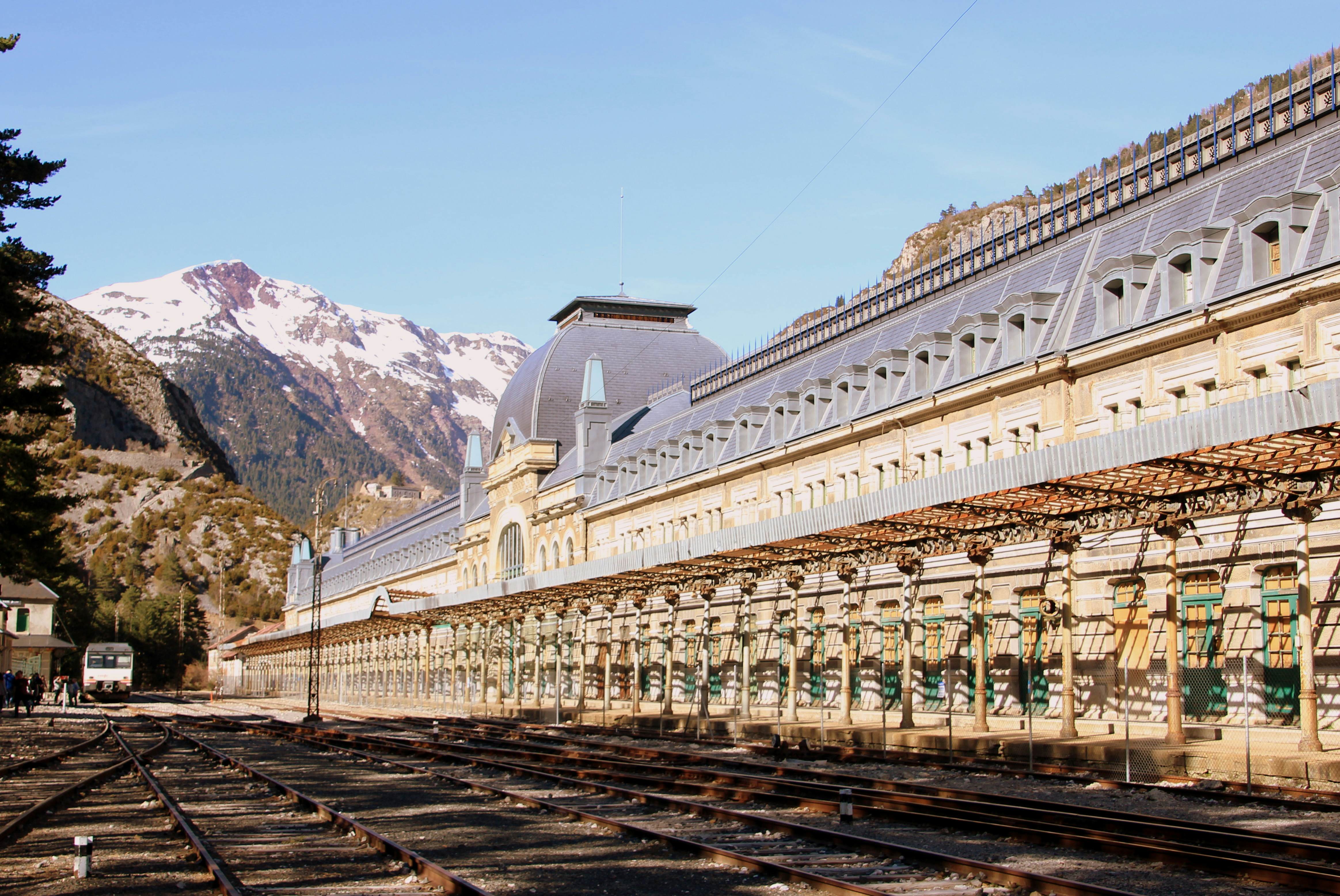Nestled in the scenic splendor of the Spanish Pyrenees, Canfranc International Railway Station stands as a majestic testament to architectural grandeur, an elegant relic of a bygone era. This historic railway station, with its opulent design and rich history, has captivated travelers and enthusiasts for over a century, earning its place as one of Spain’s most iconic landmarks.
The history of Canfranc International Railway Station dates back to the late 19th century when Spain’s King Alfonso XIII envisioned a grand rail connection that would unite the Iberian Peninsula with the rest of Europe. Construction commenced in 1923, and when it opened in 1928, it was one of the largest and most luxurious railway stations in the world. The station was designed by Spanish architect Ramón de Aguinaga and styled after the grand Beaux-Arts architecture of the Belle Époque period, featuring ornate facades, an exquisite clock tower, and an immense glass-and-iron canopy. Its grand entrance hall and lavish interior spaces reflected the station’s commitment to both form and function.

Canfranc International Railway Station was more than just a railway station; it was a symbol of international cooperation. The station quickly became a crucial transport hub, connecting Spain to France, and beyond to the rest of Europe. It was a vital link in the Trans-Pyrenean Railway, and its vast platforms were designed to accommodate both travelers and freight, facilitating the smooth flow of goods and people.
During World War II, Canfranc International Railway Station took on a cloak of intrigue and was central to various espionage operations. It was a key transit point for refugees, spies, and diplomats, and it was where diplomatic pouches from different embassies secretly passed through. Canfranc International Railway Station’s glamorous era began to wane with the advent of more modern transportation methods. The station’s vastness became impractical, and in 1970, a train derailment severely damaged a part of the station. It was closed for repairs but never fully regained its former glory.

The station eventually closed its doors in 1970, marking the end of an era in international railway travel. In recent years, there have been efforts to restore and revitalize Canfranc International Railway Station. The Spanish government and the European Union have invested in the station’s renovation, aiming to recapture its former glory and transform it into a modern transportation hub once again. Canfranc International Railway Station, Spain, is a place where history, architecture, and transportation converge. Its elegant design and storied past serve as a powerful reminder of a time when railways were the lifeblood of international travel. The ongoing restoration efforts offer a glimmer of hope that this grand monument will continue to stand as a symbol of both Spain’s rich heritage and the enduring significance of architectural marvels from the past. Canfranc International Railway Station is a living testament to the timeless allure of grandeur and history.
